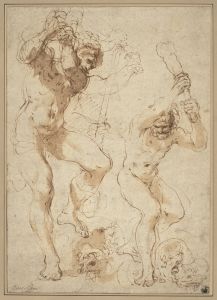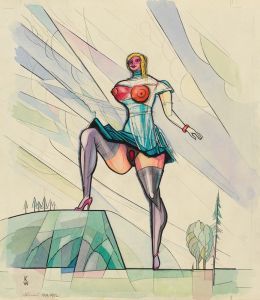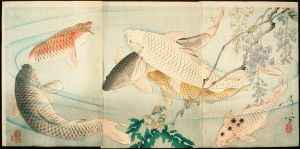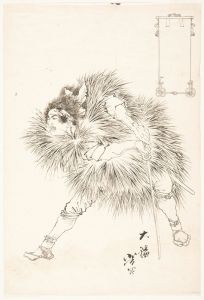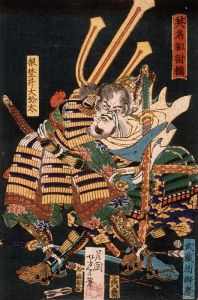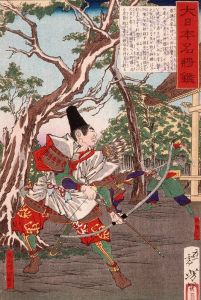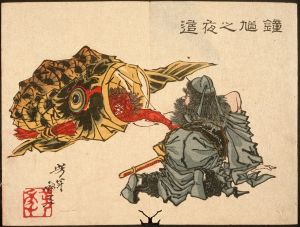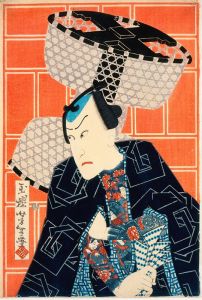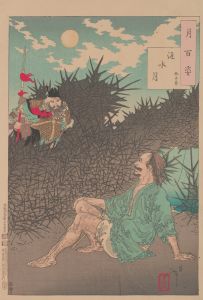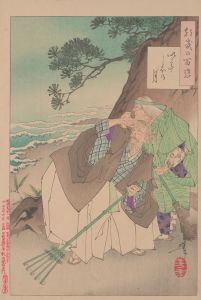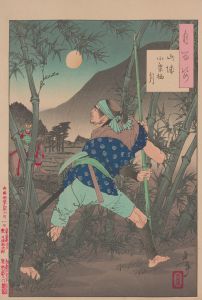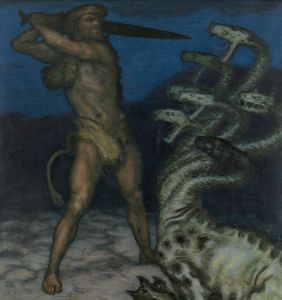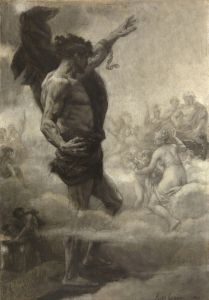
Oniwaka and Carp; Taira no Koremochi and the Demon
A hand-painted replica of Tsukioka Yoshitoshi’s masterpiece Oniwaka and Carp; Taira no Koremochi and the Demon, meticulously crafted by professional artists to capture the true essence of the original. Each piece is created with museum-quality canvas and rare mineral pigments, carefully painted by experienced artists with delicate brushstrokes and rich, layered colors to perfectly recreate the texture of the original artwork. Unlike machine-printed reproductions, this hand-painted version brings the painting to life, infused with the artist’s emotions and skill in every stroke. Whether for personal collection or home decoration, it instantly elevates the artistic atmosphere of any space.
Tsukioka Yoshitoshi (1839–1892) was a renowned Japanese artist known for his woodblock prints and paintings, particularly during the late Edo and early Meiji periods. He is often celebrated for his innovative approach to traditional ukiyo-e art, which he revitalized during a time when Western influences were becoming increasingly prominent in Japan. Among his notable works is the print "Oniwaka and Carp; Taira no Koremochi and the Demon," which exemplifies his skill in storytelling through visual art.
This artwork is part of Yoshitoshi's series "New Forms of Thirty-Six Ghosts" (Shinkei Sanjūrokkaisen), which was published between 1889 and 1892. The series features supernatural themes, drawing from Japanese folklore, legends, and historical tales. Yoshitoshi's fascination with the supernatural and the macabre is evident in this series, where he explores the boundaries between the human and the otherworldly.
"Oniwaka and Carp" depicts the legendary figure Oniwakamaru, who is often associated with the famous warrior monk Benkei. In this scene, Oniwakamaru is shown wrestling with a giant carp. The story originates from a legend where Oniwakamaru, as a young boy, encounters a monstrous carp in a pond. Demonstrating his extraordinary strength and courage, he battles and ultimately defeats the creature. Yoshitoshi captures the dynamic struggle between the boy and the carp, emphasizing the tension and movement through his detailed and expressive line work.
The second part of the print, "Taira no Koremochi and the Demon," illustrates a scene from the tale of Taira no Koremochi, a samurai from the Heian period. According to the legend, Koremochi encounters a beautiful woman while hunting in the mountains. The woman invites him to a feast, but during the celebration, Koremochi falls asleep and dreams of a divine message warning him of danger. Upon waking, he discovers that the woman is actually a demon in disguise. In the print, Yoshitoshi portrays the moment of revelation and confrontation, capturing Koremochi's bravery as he prepares to vanquish the demon.
Yoshitoshi's work is characterized by its vivid colors, intricate details, and dramatic compositions. In "Oniwaka and Carp; Taira no Koremochi and the Demon," he employs these elements to bring the legendary stories to life, engaging the viewer with both the narrative and the visual spectacle. His ability to convey emotion and movement within the static medium of woodblock printing is a testament to his mastery and innovation as an artist.
This print, like many of Yoshitoshi's works, reflects the cultural and artistic transitions of Japan during the late 19th century. While rooted in traditional themes and techniques, Yoshitoshi's art also embraces new ideas and influences, bridging the past and the present. His contributions to the ukiyo-e genre have left a lasting impact, and his works continue to be celebrated for their artistic and historical significance.





